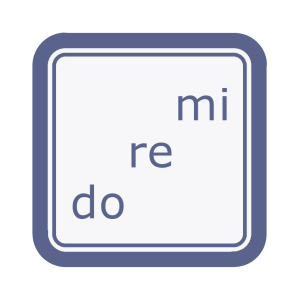Start Solfa
Learn the power of using solfa for your musical training and how solfa syllables can help you with intervals, chords and melodies.
After completing this module: you will understand how to start from the tonic to build and recognise intervals, chords and simple melodies with solfa.
Have you ever felt a melody go in one ear and out the other? Solfa (a.k.a. Solfège) provides a framework for melodies by establishing recognizable relationships between pitches, and training your ear to hear patterns. Learn how to use solfa everyday with fun lessons and exercises to master melodies.
Module Preview
Contents
- Introduction
- Finding Your Tonic
- Solfa for Intervals
- Interval Practice
- The Pentatonic Scale
- Solfa for Chords
- Bringing it all together
Learn how to use solfa for interval practice in the sample lesson below from Start Solfa. Read the helpful tips, listen to the examples, and try out the exercises to develop interval training skills.
Solfa for Intervals
Now that you’ve learned some of the basic principles of solfa syllables and how to determine the tonic, let’s discuss intervals. Recognizing the distinct sound of different intervals and being able to sing them back accurately in solfa will go a long way with developing transcribing skills.
What Are Intervals?
An interval is the space between two pitches. In Western music, we measure that space using half-steps. The half-step is the smallest interval on Western instruments like the guitar and piano, since the frets or keys are set to be half-steps apart from one another.
Interval ear training can help you with a variety of real musical tasks, for example:
- Appreciate and understand harmonies
- Hear how melodies are constructed
- Play by ear, using your improved sense of pitch distances
- Sight-sing by using intervals to understand the sheet music
- Distinguish mistakes or inaccuracies in pitch and tuning
You can learn much more about intervals in the Ear Expansion: Intervals module.
You are probably already familiar with whole-steps (tones) and half-steps (semitones). Here are the intervals in a major key:
- Major 2nd
- Major 3th
- Perfect 4th
- Perfect 5th
- Major 6th
- Major 7th
- Octave
Do you know how to determine the interval names? Every note in the scale is named as it relates to the tonic, also known as do.
Intervals in the Context of the Major Scale
C is our tonic, so we know that:

- Do-Re (C-D) = Major 2nd
- Do-Mi (C-E) = Major 3rd
- Do-Fa (C-F) = Perfect 4th
- Do-So (C-G) = Perfect 5th
- Do-La (C-A) = Major 6th
- Do-Ti (C-B) = Major 7th
- Do-Do (C-C) = Perfect Octave
Singing Intervals
One of the best ways to practice hearing intervals is to sing the syllables, and then name the interval, like you’ll hear in the sound clip below:

Intervals scale exercise
Singing intervals is another way to strengthen the connection between what you’re hearing, and your brain’s interpretation of the pitches. If you spend 20 minutes per day singing and identifying intervals, it’s like practicing vocabulary words in a foreign language. Suddenly, intervals will pop out of melodies as something you recognize. Singing the name of the interval along with the solfa pitches creates additional neural pathways that will immediately recognize the interval in the context of a melody. You may feel silly at first, but it is a fast and effective way to get your ear working.
Tone quality is not important when singing intervals. Accurate pitch is the focus, rather than impressive vibrato or full voice. If you’re a vocalist, think of it as marking or using your pure head voice. If you’re an instrumentalist, don’t worry about “sounding good”. You need to worry about singing the pitches with correct syllables, interval names and good intonation.
Hearing Intervals
The converse of singing intervals for practice is to listen and name them. You can practice this with the Interval Recognition modules here in Musical U. By hearing intervals in isolation and naming them individually, you are building a vocabulary of recognized patterns that you can put together to identify melodies.
Try to name the interval from this sound clip:
Does it sound familiar? The answer is do-re, major 2nd.
Here is another:
First, listen for the starting note. If you didn’t recognize it, play the clip again.
Did you recognize that the starting pitch in example 2 was the same as in example 1?
Now listen and try to recognize the second note. If you still can’t tell what the second note is, think about a major scale. How many notes would you sing in the major scale (starting from the first note) to get to the second?
Replay the clip as much as you need to, and try to sing the notes in between the first pitch and the second pitch.
So, can you tell what the interval is? It’s a Major 3rd. The first pitch is do, and you can sing up the scale “do re mi” to realize the second note is mi, like this:
Practice, Practice, Practice
To develop an instinctive connection in your mind between the notes you hear, the corresponding solfa syllables, and the interval relationships between them will take practice. Spend equal time on singing and hearing practice. You may find you excel at one more easily than the other, but they complement each other.
Next we’ll look at some more exercises you can use to practice solfa intervals.


